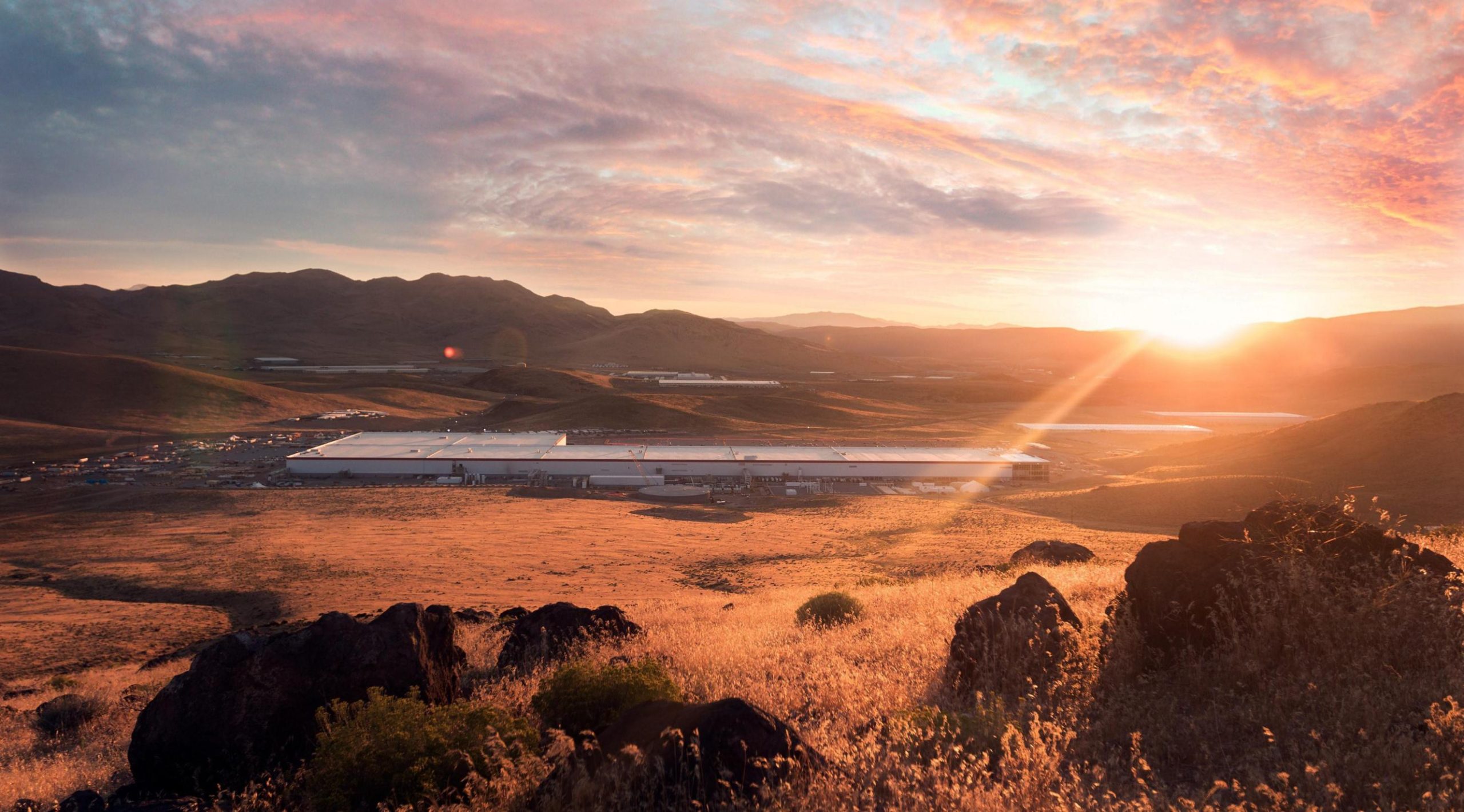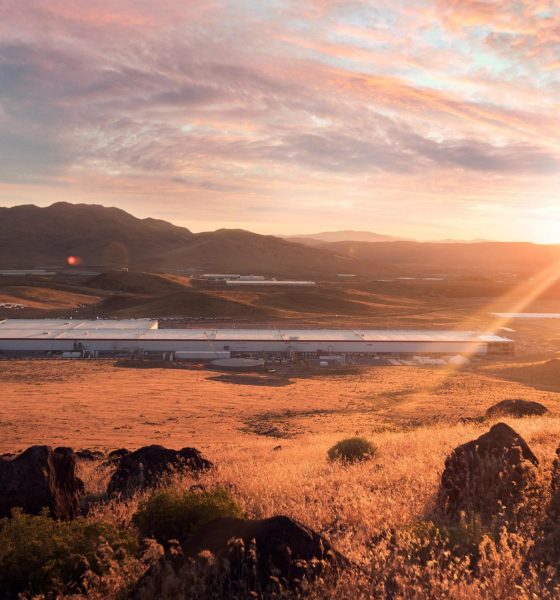

News
Tesla is looking to build on-site housing for Gigafactory 1 employees, says Elon Musk
At some point in the future, some employees working at Tesla’s Gigafactory 1 in Nevada would be able to simply walk or bike to their homes after a shift at the massive facility. Tesla is looking to expand Gigafactory 1, with Elon Musk recently stating during a conversation with NV Gov. Brian Sandoval that he envisions the company to hire more than 20,000 people for the factory. To help house this upcoming influx of workers, Musk noted that Tesla is looking to create an on-site housing compound in Gigafactory 1’s premises.
Tesla’s NV Gigafactory is less than 30% complete, but it already employs roughly 7,000 people. During a technology and innovation summit held at the factory on Tuesday, Elon Musk stated that in order for Gigafactory 1 to hit its target number of employees, the area needs to offer more infrastructure, such as schools, buildings, roads, and affordable housing. As a way to address the need for more housing units for Gigafactory 1’s future workers, Musk noted that Tesla is considering a project that involves building a housing compound for its employees.
“The biggest constraint on growth here is housing and infrastructure. We’re looking at creating a housing compound on site at the Gigafactory, using kind of high-quality mobile homes,” Musk stated.
Nevada’s real estate market was affected by the arrival of Gigafactory 1. The state of Nevada took a blow during the housing crash and recession, and by 2010, the state had a 14% unemployment rate, with more than 175,000 Nevada residents being unemployed. When Brian Sandoval became governor after winning the 2010 race, Nevada was ranked as one of the worst states in terms of bankruptcies and home foreclosures. To push the state’s recovery, Sandoval worked to attract tech companies to set up shop in the state. One of these companies was Tesla, which chose Nevada as the site for its Gigafactory 1.
Gigafactory 1 is located about 25 miles east of Reno, NV. For now, many of the facility’s employees live in Reno, as well as several surrounding cities linked to the battery factory via I-80 and the newly-completed Hwy 50, such as Carson City, Fernley, and Sparks. Real-estate prices in areas around Gigafactory 1 have risen over the past years. In Reno alone, the average monthly rent is now $1,318 per month, a 58% increase over rental rates six years ago. In the Reno/Sparks area, median home prices recently hit an all-time high, reaching $389,000 in July. Considering Musk’s new guidance, Gigafactory 1’s employees would almost triple once the facility is complete. Thus, there is definitely a need for practical, affordable housing around the facility.
It remains to be seen what type of housing Tesla would introduce for Gigafactory 1’s employees. That said, the housing initiative does go in line with some ideas that Elon Musk recently expressed. During his now-infamous podcast with Joe Rogan, for one, Musk teased the concept of a smart home with a more efficient air conditioning system. Musk’s side venture, The Boring Company, has also developed the Boring Bricks, which are designed as a cost-effective way to construct homes. Considering Elon Musk’s penchant for the creative, there is a good chance that Tesla’s on-site housing compound at Gigafactory 1 might feature some notable elements as well.
The concept of the mill towns, or settlements that are built around factories, have been around since the late 1800’s. In recent years, some of Silicon Valley’s most prominent companies have explored a rather similar concept. Last year, for example, Google and Facebook issued a proposal to build self-contained towns near their respective headquarters. These towns would feature amenities such as their own grocery stores, shops, cafes, movie theaters, gyms, and hundreds of apartments that can accommodate the companies’ expanding employee base. If Elon Musk’s words would prove to be true, it might only be a matter of time before a sort of “Tesla town” emerges just outside of Reno, Nevada.

News
Tesla aims to combat common Full Self-Driving problem with new patent
Tesla writes in the patent that its autonomous and semi-autonomous vehicles are heavily reliant on camera systems to navigate and interact with their environment.

Tesla is aiming to combat a common Full Self-Driving problem with a new patent.
One issue with Tesla’s vision-based approach is that sunlight glare can become a troublesome element of everyday travel. Full Self-Driving is certainly an amazing technology, but there are still things Tesla is aiming to figure out with its development.
Unfortunately, it is extremely difficult to get around this issue, and even humans need ways to combat it when they’re driving, as we commonly use sunglasses or sun visors to give us better visibility.
Cameras obviously do not have these ways to fight sunglare, but a new patent Tesla recently had published aims to fight this through a “glare shield.”
Tesla writes in the patent that its autonomous and semi-autonomous vehicles are heavily reliant on camera systems to navigate and interact with their environment.

The ability to see surroundings is crucial for accurate performance, and glare is one element of interference that has yet to be confronted.
Tesla described the patent, which will utilize “a textured surface composed of an array of micro-cones, or cone-shaped formations, which serve to scatter incident light in various directions, thereby reducing glare and improving camera vision.”

The patent was first spotted by Not a Tesla App.
The design of the micro-cones is the first element of the puzzle to fight the excess glare. The patent says they are “optimized in size, angle, and orientation to minimize Total Hemispherical Reflectance (THR) and reflection penalty, enhancing the camera’s ability to accurately interpret visual data.”
Additionally, there is an electromechanical system for dynamic orientation adjustment, which will allow the micro-cones to move based on the angle of external light sources.
This is not the only thing Tesla is mulling to resolve issues with sunlight glare, as it has also worked on two other ways to combat the problem. One thing the company has discussed is a direct photon count.
CEO Elon Musk said during the Q2 Earnings Call:
“We use an approach which is direct photon count. When you see a processed image, so the image that goes from the sort of photon counter — the silicon photon counter — that then goes through a digital signal processor or image signal processor, that’s normally what happens. And then the image that you see looks all washed out, because if you point the camera at the sun, the post-processing of the photon counting washes things out.”
Future Hardware iterations, like Hardware 5 and Hardware 6, could also integrate better solutions for the sunglare issue, such as neutral density filters or heated lenses, aiming to solve glare more effectively.
Elon Musk
Delaware Supreme Court reinstates Elon Musk’s 2018 Tesla CEO pay package
The unanimous decision criticized the prior total rescission as “improper and inequitable,” arguing that it left Musk uncompensated for six years of transformative leadership at Tesla.

The Delaware Supreme Court has overturned a lower court ruling, reinstating Elon Musk’s 2018 compensation package originally valued at $56 billion but now worth approximately $139 billion due to Tesla’s soaring stock price.
The unanimous decision criticized the prior total rescission as “improper and inequitable,” arguing that it left Musk uncompensated for six years of transformative leadership at Tesla. Musk quickly celebrated the outcome on X, stating that he felt “vindicated.” He also shared his gratitude to TSLA shareholders.
Delaware Supreme Court makes a decision
In a 49-page ruling Friday, the Delaware Supreme Court reversed Chancellor Kathaleen McCormick’s 2024 decision that voided the 2018 package over alleged board conflicts and inadequate shareholder disclosures. The high court acknowledged varying views on liability but agreed rescission was excessive, stating it “leaves Musk uncompensated for his time and efforts over a period of six years.”
The 2018 plan granted Musk options on about 304 million shares upon hitting aggressive milestones, all of which were achieved ahead of time. Shareholders overwhelmingly approved it initially in 2018 and ratified it once again in 2024 after the Delaware lower court struck it down. The case against Musk’s 2018 pay package was filed by plaintiff Richard Tornetta, who held just nine shares when the compensation plan was approved.
A hard-fought victory
As noted in a Reuters report, Tesla’s win avoids a potential $26 billion earnings hit from replacing the award at current prices. Tesla, now Texas-incorporated, had hedged with interim plans, including a November 2025 shareholder-approved package potentially worth $878 billion tied to Robotaxi and Optimus goals and other extremely aggressive operational milestones.
The saga surrounding Elon Musk’s 2018 pay package ultimately damaged Delaware’s corporate appeal, prompting a number of high-profile firms, such as Dropbox, Roblox, Trade Desk, and Coinbase, to follow Tesla’s exodus out of the state. What added more fuel to the issue was the fact that Tornetta’s legal team, following the lower court’s 2024 decision, demanded a fee request of more than $5.1 billion worth of TSLA stock, which was equal to an hourly rate of over $200,000.
Delaware Supreme Court Elon Musk 2018 Pay Package by Simon Alvarez
News
Tesla Cybercab tests are going on overdrive with production-ready units
Tesla is ramping its real-world tests of the Cybercab, with multiple sightings of the vehicle being reported across social media this week.

Tesla is ramping its real-world tests of the Cybercab, with multiple sightings of the autonomous two-seater being reported across social media this week. Based on videos of the vehicle that have been shared online, it appears that Cybercab tests are underway across multiple states.
Recent Cybercab sightings
Reports of Cybercab tests have ramped this week, with a vehicle that looked like a production-ready prototype being spotted at Apple’s Visitor Center in California. The vehicle in this sighting was interesting as it was equipped with a steering wheel. The vehicle also featured some changes to the design of its brake lights.
The Cybercab was also filmed testing at the Fremont factory’s test track, which also seemed to involve a vehicle that looked production-ready. This also seemed to be the case for a Cybercab that was spotted in Austin, Texas, which happened to be undergoing real-world tests. Overall, these sightings suggest that Cybercab testing is fully underway, and the vehicle is really moving towards production.
Production design all but finalized?
Recently, a near-production-ready Cybercab was showcased at Tesla’s Santana Row showroom in San Jose. The vehicle was equipped with frameless windows, dual windshield wipers, powered butterfly door struts, an extended front splitter, an updated lightbar, new wheel covers, and a license plate bracket. Interior updates include redesigned dash/door panels, refined seats with center cupholders, updated carpet, and what appeared to be improved legroom.
There seems to be a pretty good chance that the Cybercab’s design has been all but finalized, at least considering Elon Musk’s comments at the 2025 Annual Shareholder Meeting. During the event, Musk confirmed that the vehicle will enter production around April 2026, and its production targets will be quite ambitious.








